What does the word ‘Victorian’ bring to mind? For Costume Designer Consolata Boyle, the answer is the color black – in all its varying tones and textures. The FIDM Museum was fortunate to host the Irish designer in September 2017 before the release of her latest film Victoria and Abdul, for which she received her third Academy Award nomination for Best Costume Design (now on display until April 7 in our Art of Motion Picture Costume Design exhibition).
Academy Award-nominated costumes from Victoria and Abdul by Consolata Boyle
Queen Victoria costume sketch for Victoria and Abdul by Consolata Boyle
The movie tells the story of Queen Victoria at the end of her life, when she embarks on a controversial friendship with Abdul Karim, an Indian servant that became an unlikely companion to the aging Queen. To celebrate the film’s majestic subject, we showed Consolata the Museum’s rare c. 1897 two-piece ensemble belonging to Queen Victoria. The bodice and skirt, made of silk faille, crepe, lace, spangles, and beads, was part of the Queen’s extensive mourning wardrobe.
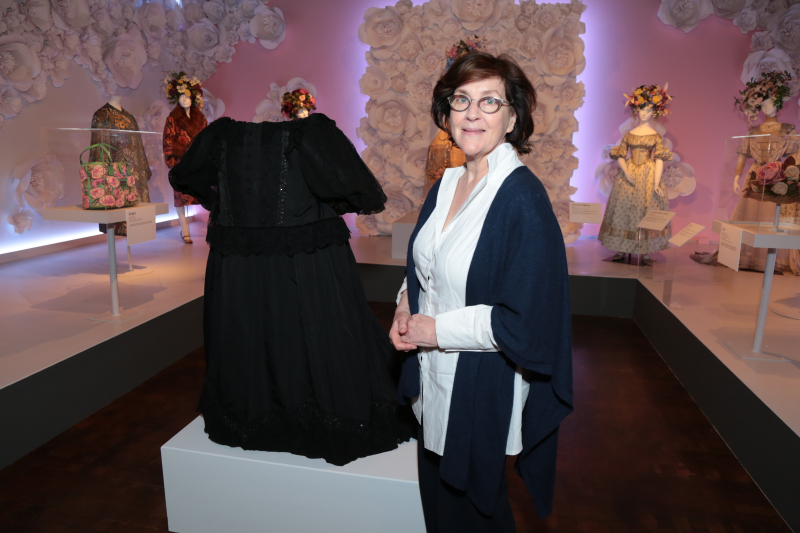 Costume Designer Consolata Boyle with FIDM Museum Queen Victoria gown
Costume Designer Consolata Boyle with FIDM Museum Queen Victoria gown
Helen Larson Historic Fashion Collection
FIDM Museum Purchase: Funds generously donated by Barbara Bundy, 2017.5.52AB
While examining Queen Victoria’s gown in our History Gallery, we spoke to Consolata about her experiences researching and designing for a Queen on Victoria and Abdul:
Can you tell us your reaction to seeing the Queen Victoria gown in the FIDM Museum?
It brings back so many discussions I had with the light and camera man – I can remember the first terror of the wonderful cinematographer Danny Cohen, who said, “Consolata it’s black! So much black!” And of course Victoria’s life was steeped in black because she was permanently in mourning, from the death of her beloved husband on. It’s so interesting because one way that I did it was all of this very typical embellishment. I took it a step further to make the blacks almost three dimensional. We laid on a massive amount of texture. By looking at this, it absolutely brings back in torrents the memories: the physical size, the shape, and the fact that this beautiful gown is obviously towards the latter end of her reign.
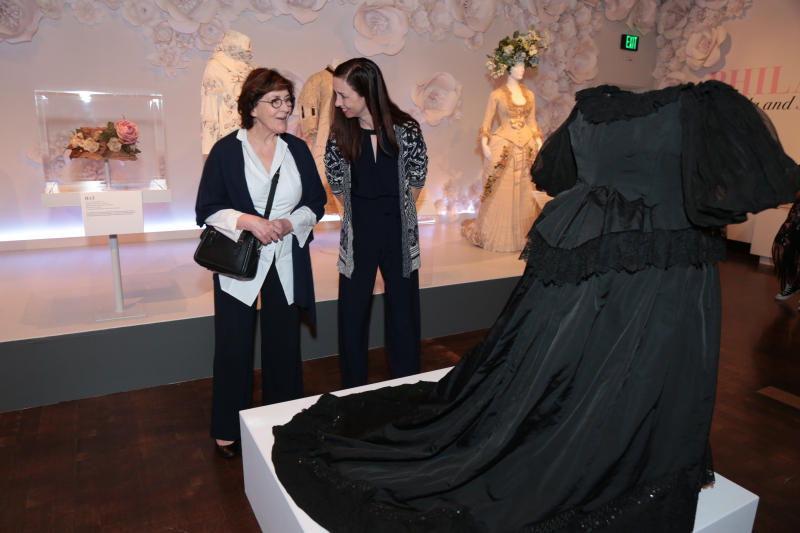 Consolata Boyle and Associate Curator Christina Johnson examine the FIDM Museum’s Queen Victoria gown
Consolata Boyle and Associate Curator Christina Johnson examine the FIDM Museum’s Queen Victoria gown
It brings back so many memories of getting Judy into this shape, and padding Judy, and her good humor. We had so many laughs, as well as many discussions about Victoria. She is deeply knowledgeable having played Victoria before. It’s the feeling of knowing how we had to very carefully build up Judy to get to this shape. The whole technical construction of the padding, which would have to be light – of course she wore it all day and she was in nearly every single scene in the film. The technical elements: the laundry, its lightness, its flexibility. Also its ability to give me the shape I needed to create – round yet tiny (obviously Victoria was smaller in height than Judy). [The gown] just brings back floods of memories, so many fittings with Judy, of all the research, of handling these garments, turning them inside out, seeing the boning on the inside, seeing all the little pockets. In some of her garments she had pockets hidden in the folds where she would keep little pennies or keepsakes or little mementos or jewelry.
Queen Victoria costume sketch for Victoria and Abdul by Consolata Boyle
Victorians’ jewelry – and particularly Victoria’s jewelry – is very personal. Besides her ceremonial jewelry with all of the orders and the beautiful tiaras there is that sentimental element of the Victorians. She had her babies’ milk teeth inserted into earrings. I had a lot of jewelry made that was based on the jewelry that Albert had designed because they were very key, and she wore them all the time. And of course the jewelry of mourning, all that plaited hair and braided hair. I had brooches made of braided hair that she wore, the hair of her loved ones. All of this is so typical of that Victorian era.
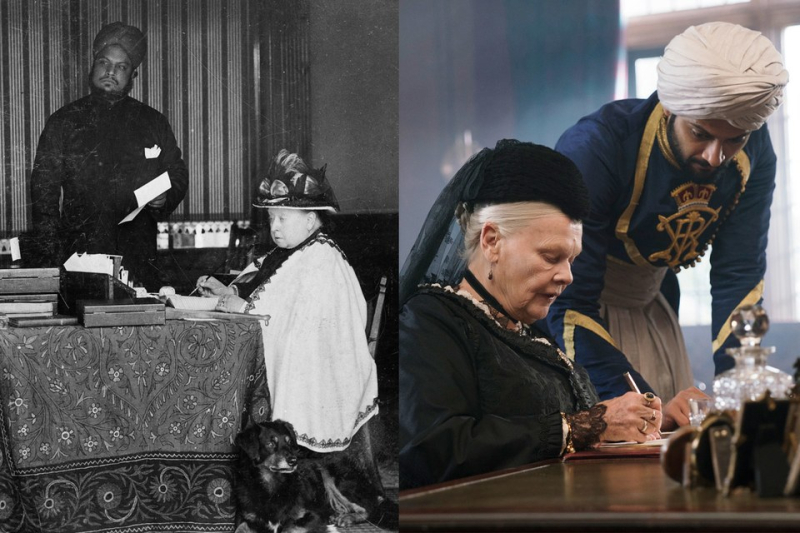 Left, From Historial Collection/REX/Shutterstock; Right, courtesy of Focus Features. Queen Victoria and Abdul Karim, 1890; Judi Dench as Queen Victoria and Ali Fazal as Abdul Karim in Victoria & Abdul. Photos via VanityFair.com
Left, From Historial Collection/REX/Shutterstock; Right, courtesy of Focus Features. Queen Victoria and Abdul Karim, 1890; Judi Dench as Queen Victoria and Ali Fazal as Abdul Karim in Victoria & Abdul. Photos via VanityFair.com
It brings back a lot of joy and memories of just being so intrigued by the woman and in a way sympathetic to her towards the end of her life, and her loneliness actually. She was wonderful, and Judy was magnificent.
Queen Victoria costume sketch for Victoria and Abdul by Consolata Boyle
You’ve worked on many films based on true stories, not only Victoria and Abdul but The Queen, Iron Lady, Philomena, and Florence Foster Jenkins. Is it difficult to make the costumes historically accurate for these films? What goes into that process?
Our job is to tell stories. Film is about telling stories in a very particular way. Every film starts with a script, every script has a point of view. I have worked on many projects about historical events. Some are within living memory, some are not, but people have preconceived notions. You bring that with you, it’s part of the territory.
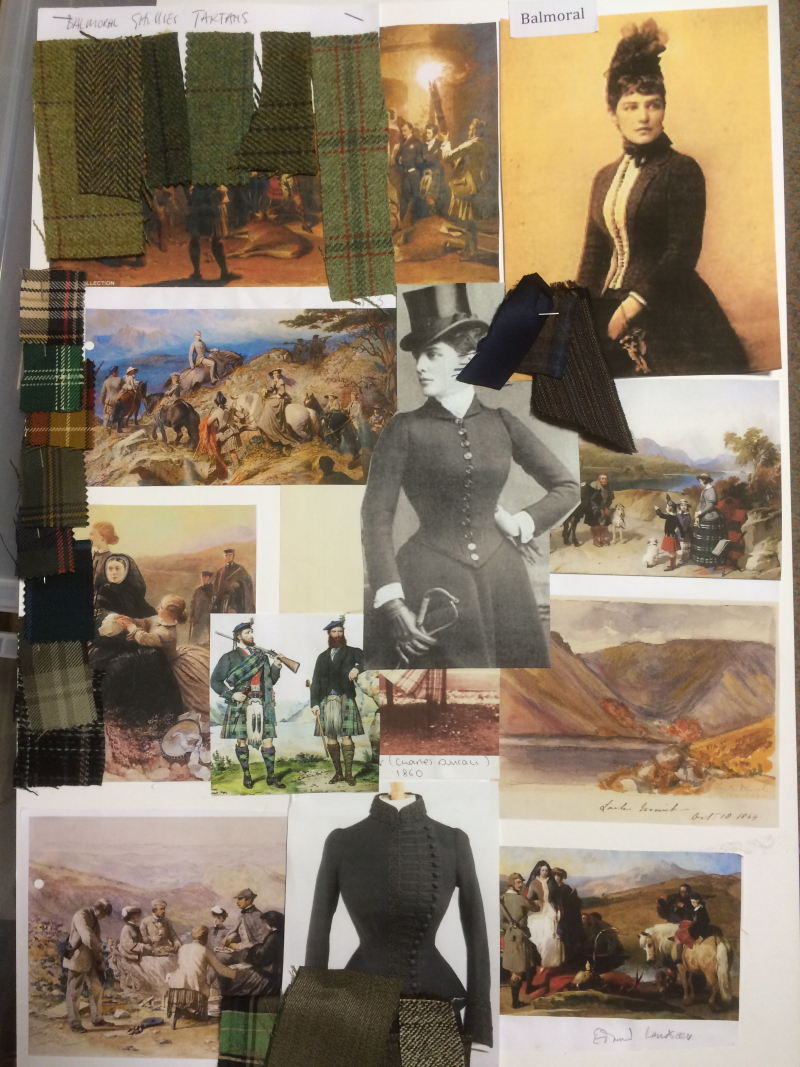 Victoria and Abdul inspiration/mood board by Consolata Boyle
Victoria and Abdul inspiration/mood board by Consolata Boyle
Queen Victoria costume sketch for Victoria and Abdul by Consolata Boyle
I always feel that you need to do massive research, and then you need to know the moment that you walk away from it, and you don’t allow it to dominate. You take what you need – again I go back to the script – and then the overarching vision. All the creative heads of departments deal with an overarching vision of how we’re going to tell this story. Color palette, mood, where we are historically, socially, politically, and in the head of the person we’re actually going to costume. Where are they going, where have they been. So my emphasis would be that research and historical detail is completely vital, and once you have that pitch perfect and you know there isn’t a false note, you then can leave it behind. And that’s the most important step – the leaving behind, and not allowing it to strain and to limit what you’re doing. You need to have the confidence, and know the moment when it’s no longer of any value.
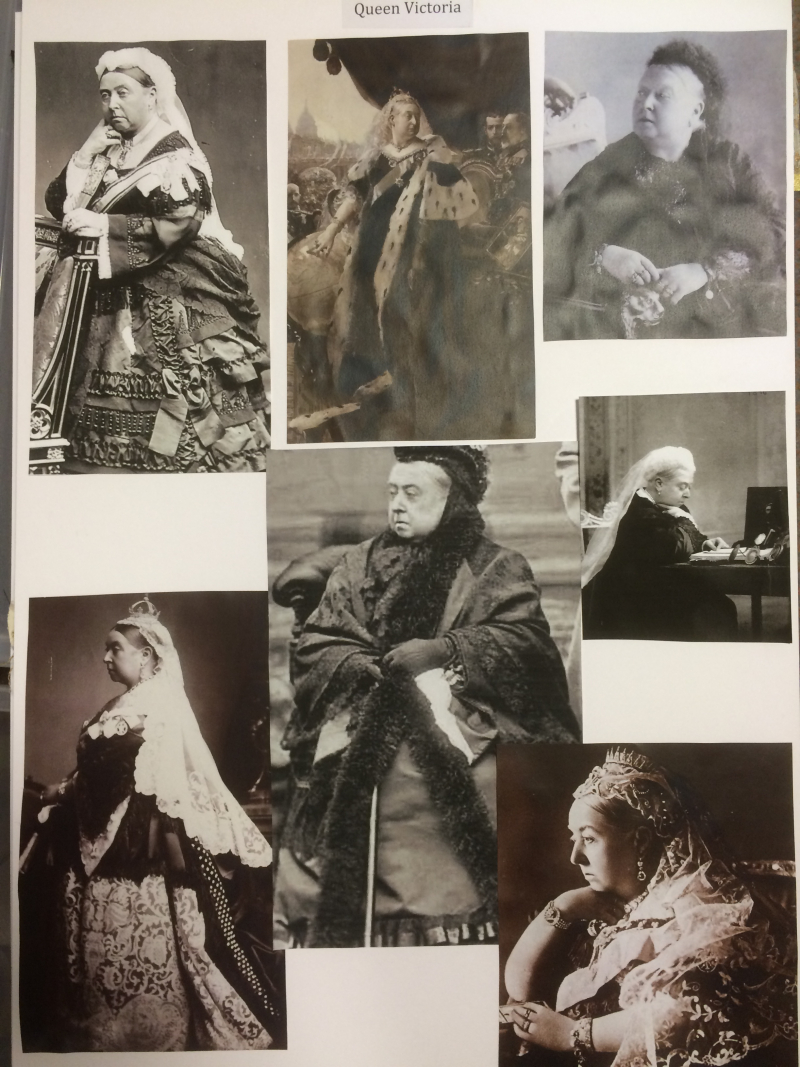 Research photos of Queen Victoria compiled by Consolata Boyle
Research photos of Queen Victoria compiled by Consolata Boyle
How did you accomplish your research for Victoria and Abdul?
Victoria, as a woman and during her reign, was recorded. Photography was thriving at that time. Obviously at the beginning there were more paintings, and then later on she was photographed at every possible juncture. The court was photographed as well. We did exhaustive research. We did it both from the written sources and from the visual sources. But our particular emphasis was about the end of her reign when she was an elderly, frail, very ill and unhappy woman, that last 10 years of her life. That was during the years she met this young man [Abdul] and had this friendship. In the actual historical fact, a lot of the references that had anything with him were destroyed, but there were some that survived. There was enough to piece together his progression from the slender beautiful young man who arrived in England from India to the rather pompous, lordly person who caused such chaos in the English court and the royal family, and utter political chaos.
Abdul Karim costume sketch for Victoria and Abdul by Consolata Boyle
We researched in India, we researched in the Royal Archives, we researched absolutely everywhere. We found enough to build up a picture of Abdul Karim, the young man who came over as a servant. In many ways the thrust of the script is really about their private times together, so in a way it is an imagined world. Nobody really knows what actually happened. The facts are out there: he arrived, he did this, he caused trouble and he went. But what exactly happened between them? Obviously she protected him as much as she could. But it really was an imagined, mysterious relationship, and a very private friendship. A very close and touching mother/son relationship. We were able to access some of the letters she wrote to him, signing off very movingly ‘come back soon my beloved son.’ We were able to build up a picture of that relationship and take from what we had to reveal many things about the court in that period, about racism in that period, about the dynamics of their relationship and how important it was for both of them. I think that really was our premise. The research [for Abdul] was equal to the research we did for her, obviously we needed to research his early life in India, and then his later life in India after he went back. We took from it what we needed and channeled it into our story. Our story was specific.
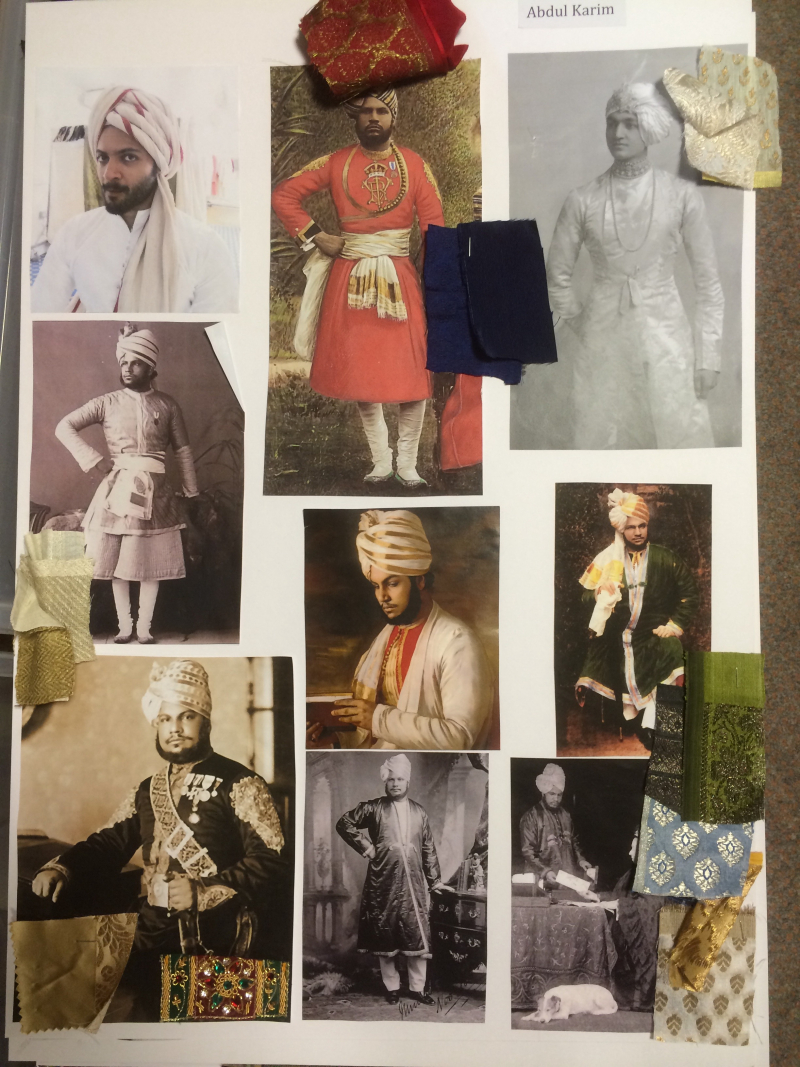 Victoria and Abdul inspiration/mood board by Consolata Boyle
Victoria and Abdul inspiration/mood board by Consolata Boyle
You obtained an Archeology degree and a post-graduate diploma in textiles before entering the world of costume design; would you recommend that others interested in pursuing this career study history or another field first?
Yes I would, and I would be encourage people to be fearless in their choices – not to make narrow choices about going straight into design or fashion or something that seems on the surface to be obviously leading in one direction. Have broad horizons, have confidence, be interested in everything, then you’ll bring all of that – be it history, be it an academic subject, be it an art based subject, be it a craft. The more you can bring to your work, the more coherent you are when you’re speaking to actors and speaking to directors and making your case. Because in film, everybody is singing from the same hymn sheet, but in a way everybody is bringing their own invaluable contribution from their background and everything they have experienced in their life. You’re dealing on such an intimate level – in my work, when you’re dealing with people’s physical shapes as well as the story the clothes are going to tell – you need to be able to make people have confidence in you and trust you and know that your background isn’t limited, that you have a wisdom in life from what you’ve done. That builds up your ability to persuade people gently around your point of view. I can’t emphasize it enough: broad horizons.
Abdul Karim costume sketch for Victoria and Abdul by Consolata Boyle
What other advice do you have for aspiring costume designers?
I would go back to what I said about life experience. Because the industry is so tough, the more life experience that you can bring before you launch yourself in will benefit you, will broaden your horizons, will also give you more strength to withhold the disappointments and the joys. I would suggest that you should be willing to do anything. I know that from my experience, when somebody joins my team, be happy, be open to doing anything. Be an asset. Departments are full of people who need things to be done. Build up practical skills as well as the artistic and creative. I would suggest life skills. I think you need to be many different things as well as an artist and a great collaborator.
Queen Victoria costume sketch for Victoria and Abdul by Consolata Boyle
If you love costume you have to love film first. You have to know about film history. Build up your knowledge, go to movies. Be a lovely person to have in a group…and then I think you’re unstoppable! Everybody is going to want you as part of a team.
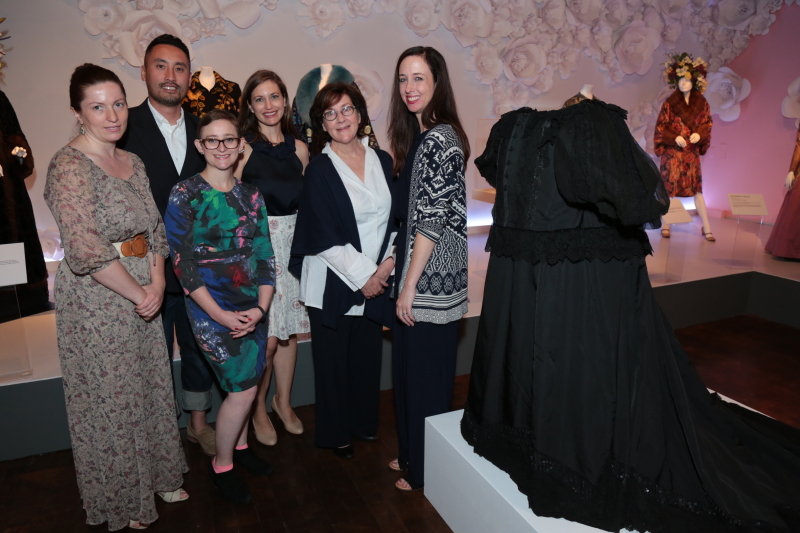 Victoria and Abdul Costume Designer Consolata Boyle with the FIDM Museum Team and Queen Victoria gown (Helen Larson Historic Fashion Collection)
Victoria and Abdul Costume Designer Consolata Boyle with the FIDM Museum Team and Queen Victoria gown (Helen Larson Historic Fashion Collection)

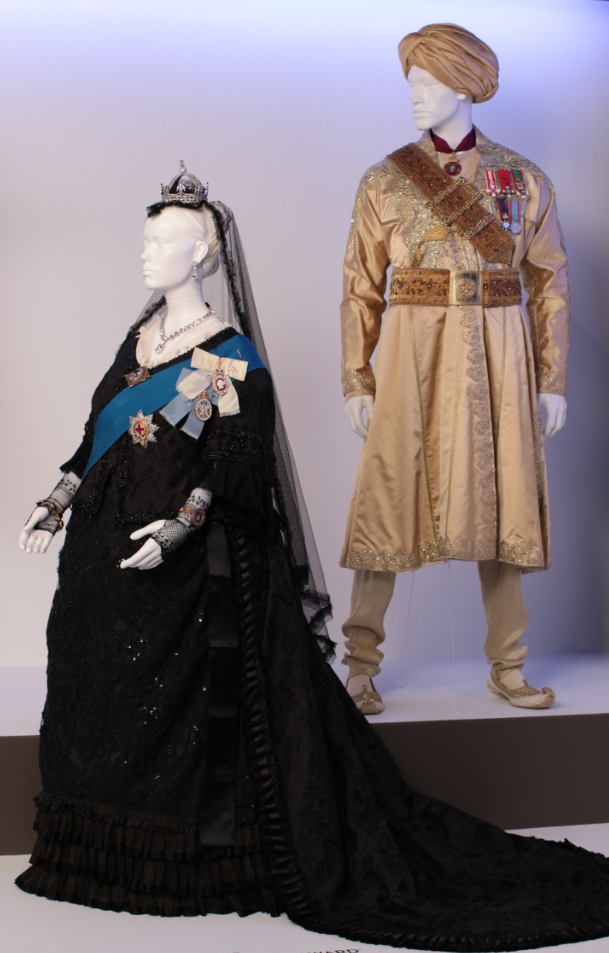
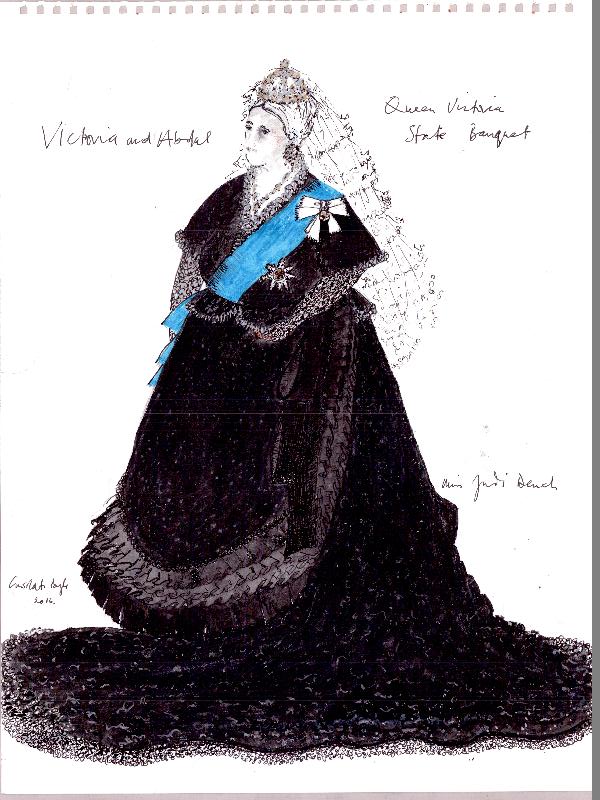
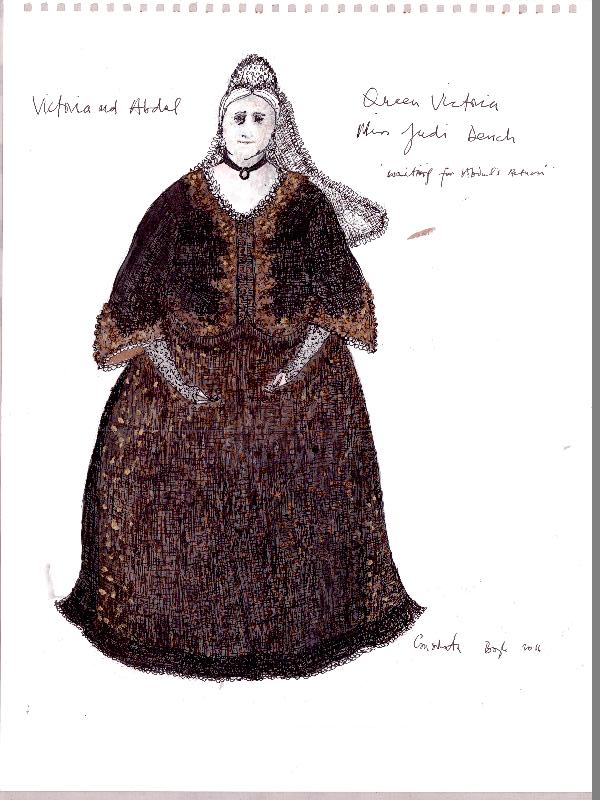
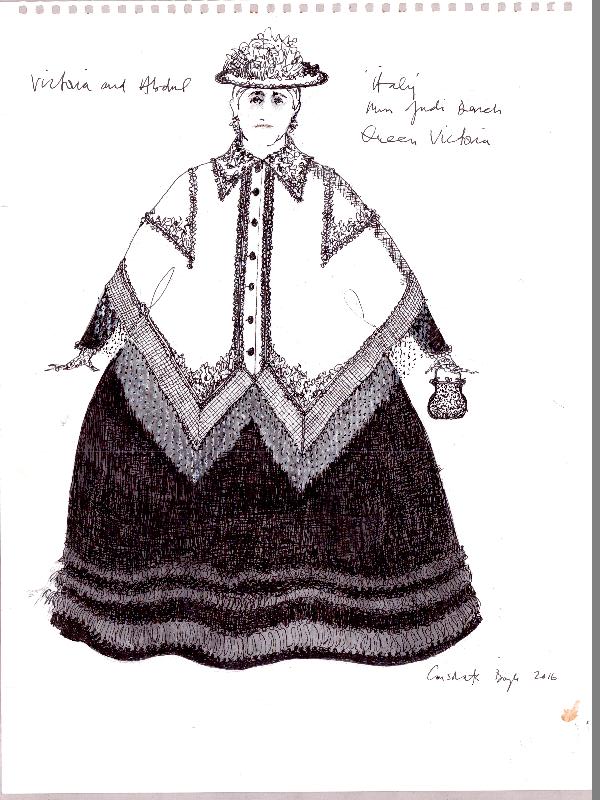
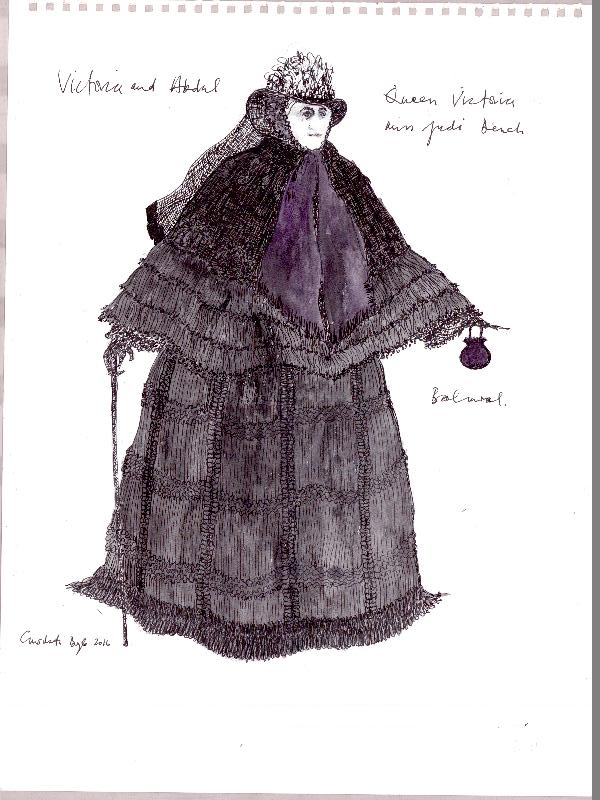
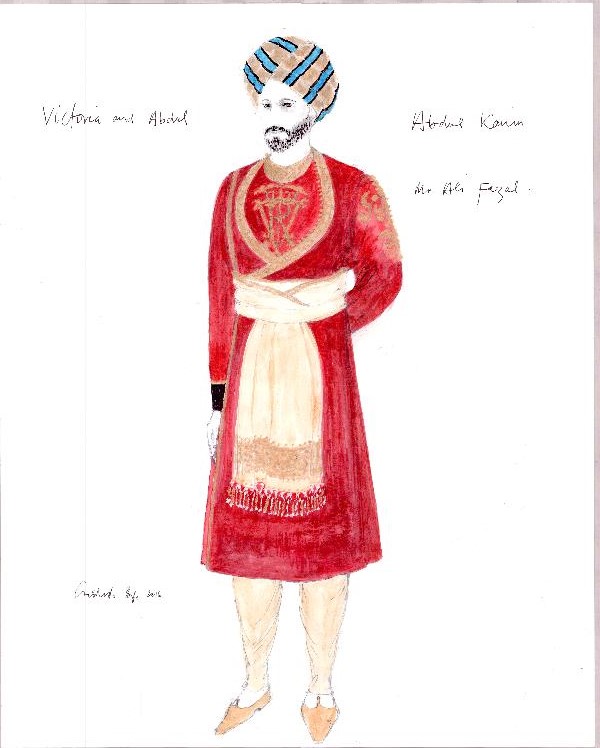
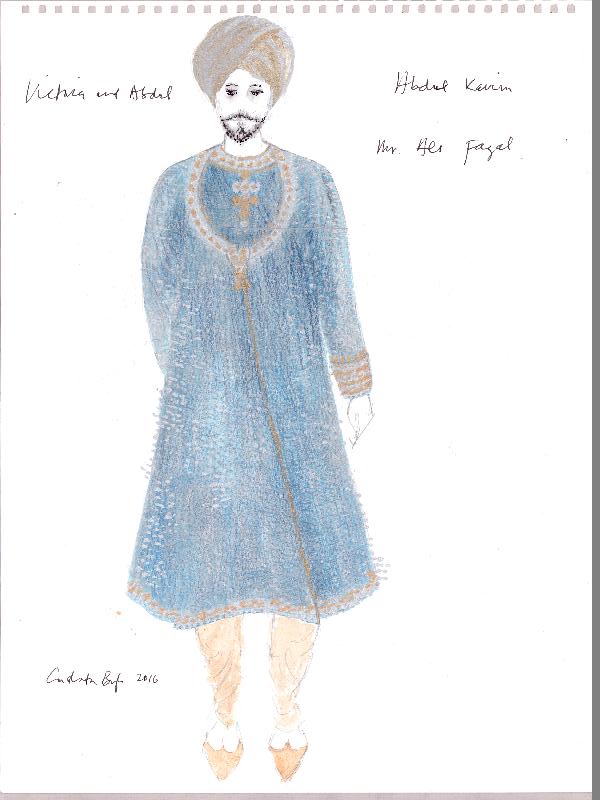
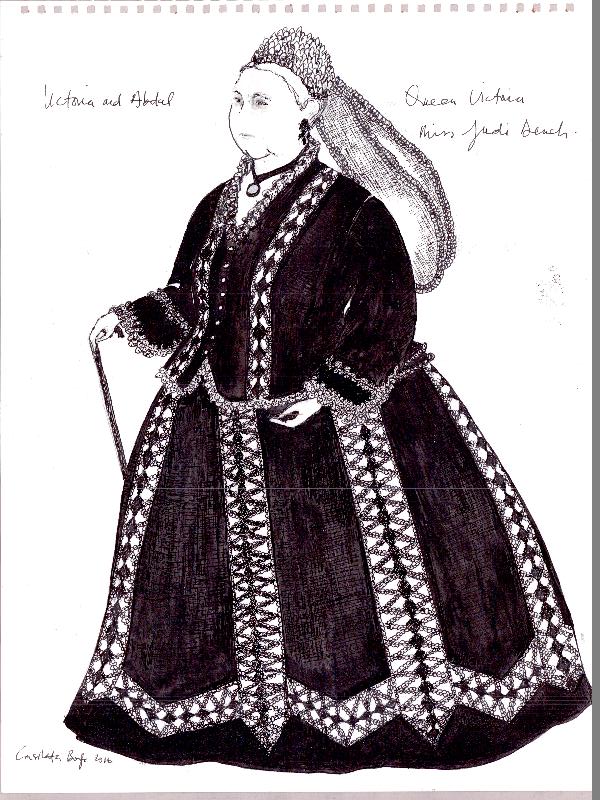

This was super cool! The attention to detail in those costumes was astonishing! Thanks for sharing it!